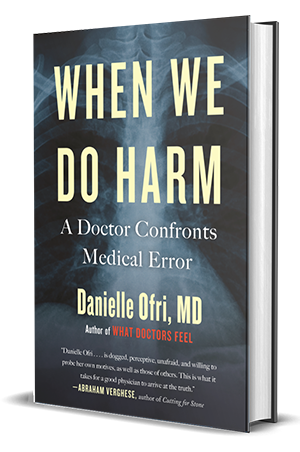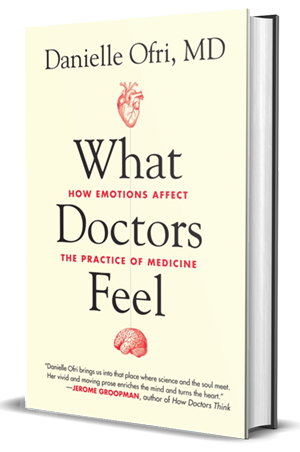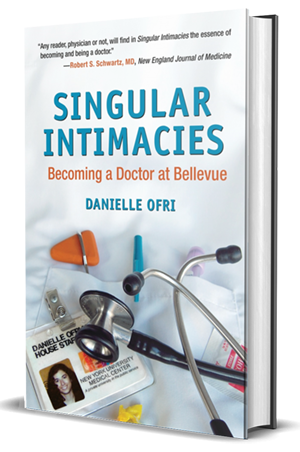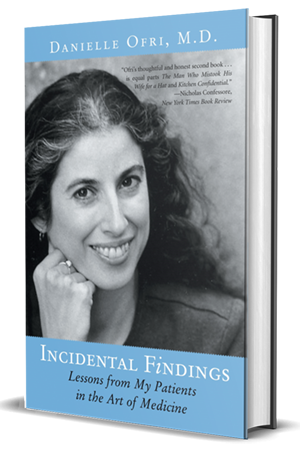Articles & Media
Lives Cut Short by Depression
There is something about a first friend that is irreplaceable. No matter how disparately your lives travel, the first friend you ever had occupies a special place in your heart. I was lucky that Michael was considerate enough to be born four months before me, waiting next door, ready to join me in elaborate childhood games of hide-and-seek, multilevel couch forts and family camping trips in the Catskills. More
Doctors and the D Word….
I could understand why other people might prefer euphemisms for death, but why medical professionals? Weren’t we supposed to be much more comfortable with the workings of the human body? Didn’t we pride ourselves on our technical accuracy? Didn’t we say “umbilicus” instead of “belly button?” More
Health and Luck of the Draw
We imagine medicine as a rational science, and we imagine our attention to our lives and our bodies pays off in reasonably predictable ways. But I have to admit that random, irrational, unplanned events can often have greater effects on overall health. More
Doctors on Facebook
For doctors who have waded into social media, however gingerly, many questions arise. Is posting a medical musing or details of a recent party on Twitter or Facebook the same as chatting with colleagues while walking down the hall of the hospital? Do the same rules of etiquette and liability apply to this extremely public environment? More
For Whom Do We Write
Was writing simply cathartic, an unloading of pent-up frustration, pain, occasional exhilaration? Or was this part of a nobler cause, something that would fall under the purview of healing, something with ultimate benefit for my patients? For if it wasn’t the latter, was I not simply exploiting my patients for their readily accessible drama? More
Report Card on Women’s Health: "F"
As report cards go, this one was pretty depressing. The Women’s Health Care Report Card for 2010 from the National Women’s Law Center showed a nation failing the majority of its population. Not a single state in our fine union received a “Satisfactory†grade. Not one! More
Medicine Out of Context
I ducked into the ladies’ room at La Guardia Airport in New York for a pitstop before boarding my flight. Inside I encountered a housekeeper washing the floors. She flashed me a broad smile.
“Doctora,” she said, and then hesitated. I could see that she was waiting for a response. “Recuerdame?” More
Maladies, Remedies, and Anthologies: Medicine Taken at Its Word
The urge to anthologize seems to be one of those primordial drives, nestled in our genomes alongside the compulsions to eat heartily, imbibe lustily, and slaughter enemies willfully. Or at least that’s how the Greeks appear to have experienced it. More
Chekhov and Public Health
At first glance, it might seem odd that a public health journal would initiate a section about arts and humanities. Public health, after all, deals with populations; it eschews the individual except as it forms one of a group. The creative arts, however, deal almost exclusively with individuals. Literature, in particular, always has a protagonist, and the protagonist is never ‘alcoholics with pancreatitis,’ ‘female prisoners receiving hepatitis B vaccination,’ ‘South Asians with cardiovascular risk factors,’ ‘UK asylum seekers with infectious disease,’ or ‘teenaged asthmatic smokers.’ A protagonist is an individual.
More
Doctor at the Funeral
I was in clinic the other day, showing the ropes to a fresh-faced medical student, when a nurse leaned toward me and whispered that L.W. had died over the holiday weekend. It was like a sucker-punch in the gut, the raw rope of grief lashing out unexpectedly. More
The Doctor vs The Computer
While I’ve been typing, the character number has been counting backward from 1,000, and now I’ve hit zero. The computer will not permit me to say anything more about my patient.
More
Patient 1, Society 0
A young, healthy patient called me recently requesting a CT scan of his head because of his headaches. He described his symptoms, and they sounded to me like migraines. His clinical picture was not suggestive of a brain tumor and I told him so, but he was persistent. “What if I’m the one 35-year-old who drops dead of a brain tumor while you try to figure out what’s wrong?” More
Chaperones for Patients?
The airline passenger who refused to allow a security pat-down made national headlines quickly. The idea of a stranger touching a person’s intimate areas makes most people cringe. But something like this occurs every day in the doctor’s office. More
Gifts of the Magi: For a young doctor far from home, an unexpected present
“Bitter winds churned up First Avenue and tore through the pathetically thin scrubs that Bellevue doled out to its interns. The December sky glowered the same leaden-green color of the bile that Dr. Kamal Singh was siphoning from the gut of Mr. Bill Porter, a homeless alcoholic with a Southern accent, a jauntily curled mustache and a battered walking stick. His skin was sallow and his eyes jaundiced. He squinted at Dr. Singh. ”Thought they weren’t giving visas to Arabs these days,” he rasped.
Dr. Singh controlled his temper. “Mr. Porter, we don’t discriminate here against doctors or against patients.” He sighed. “And I’m Sikh.” He pointed to his indigo turban for good measure, but how would a redneck bigot from Texas know Sikhism from Buddhism from vegetarianism?…” More
Merced
“This is a case of a 23 year-old Hispanic female…†The speaker droned on with the details of the case that I knew so well. I leaned back in my chair, anticipating and savoring the accolades that were going to come. After all, in a roundabout way, I’d made the diagnosis. I was the one who had the idea to send the Lyme test in the first place. More








